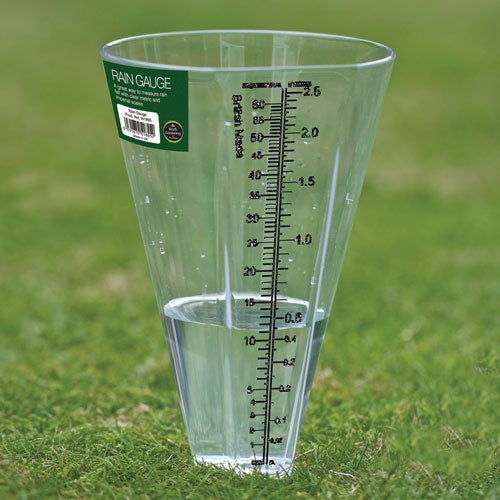Professional Tips for Utilizing a Rain Gauge to Monitor Citizen Weather Issues
Professional Tips for Utilizing a Rain Gauge to Monitor Citizen Weather Issues
Blog Article
Unveiling the Scientific Research Behind Rain Assesses: Exactly How These Tools Play a Vital Role in Environment Study and Environmental Tracking
Rain gauges, relatively simple gadgets, hold a profound relevance in the realm of climate research and ecological monitoring. As we peel back the layers of this clinical shroud surrounding rainfall determines, we discover a world where precision, information accuracy, and thorough observation assemble to unveil a much deeper understanding of our altering climate and its effect on the planet.
Value of Rainfall Scales
Rain gauges play an essential role in surveillance and measuring rainfall levels, offering necessary information for environment research and analysis. These tools are essential in quantifying the quantity of rains that happens in a specific area over a particular period. By measuring and gathering rain, rainfall assesses deal valuable understandings into the circulation and intensity of precipitation, assisting meteorologists, hydrologists, and climatologists in comprehending weather condition patterns and patterns.
One of the vital reasons rainfall gauges are critical is their capability to offer localized and precise information. Unlike satellite or radar-based dimensions, which provide more comprehensive observations, rain assesses offer exact details certain to the location where they are placed. This localized information is important for various applications, including flood projecting, drought surveillance, and water source management. In addition, lasting information gathered from rainfall evaluates helps in examining climate modification effects and patterns, adding substantially to scientific study and decision-making processes. Essentially, rainfall assesses work as essential tools in the area of weather forecasting and ecological scientific research, playing an important function in progressing our understanding of weather condition and environment dynamics.
Kinds Of Rain Scales

Functionality and Procedure
In the world of climate research study and meteorological studies, the efficiency of rain evaluates lies in their elaborate capability and exact operational devices. Rainfall gauges are designed to precisely gauge the amount of precipitation that falls over a particular area throughout a collection period.
The performance of rainfall determines is based upon the concept of determining and accumulating rainwater in a standard way. This accumulated data is critical for comprehending regional weather patterns, tracking lasting environment trends, and assessing environmental effects. To guarantee exact dimensions, rainfall assesses demand to be tactically positioned in open areas away from blockages such as structures or trees that can conflict with the collection procedure.
The operational element of rain gauges entails regular upkeep to avoid particles buildup, calibration checks to maintain dimension precision, and information videotaping for evaluation (rain gauge). Overall, the capability and operation of rain assesses are important for gathering reputable precipitation information essential to environment research study and environmental tracking
Function in Environment Research Study
Given the essential significance of exact rainfall measurements in understanding weather condition patterns and environmental effects, the duty of rainfall evaluates in climate study is indispensable. Rain assesses provide crucial data for climate research study by quantifying the amount of rainfall that drops over a certain location throughout an offered period. This information is critical for monitoring long-lasting trends in precipitation patterns, evaluating the influence of climate modification on rains distribution, and boosting climate versions.

Climate scientists use information collected from rainfall evaluates to examine variations in precipitation degrees, identify local climate fads, and review the performance of water resource administration approaches. By have a peek at this website contrasting historic precipitation information with current dimensions, scientists can spot shifts in rainfall patterns, such as modifications in the regularity or intensity of rainfall events. This information is important for recognizing exactly how climate change is read affecting rainfall characteristics and can aid policymakers make notified choices relating to adjustment and mitigation methods.
Applications in Ecological Tracking

In flood projecting, rainfall gauge data aids to track rains strength and distribution, enabling authorities to provide prompt warnings and take necessary procedures to mitigate flooding dangers (rain gauge). Drought tracking counts on rain gauge data to examine dampness levels in the soil and track precipitation deficiencies, helping in the identification of drought-prone locations and the implementation of dry spell action strategies
Additionally, rain scale information plays an important duty in water resource management by supplying information on water accessibility and use patterns. This information is utilized to make enlightened choices regarding water allotment, preservation steps, and sustainable water resource planning. Additionally, helpful resources in farming, rain gauge information assists farmers in optimizing watering routines, plant choice, and overall farm management methods based on neighborhood precipitation patterns. On the whole, rain determines are vital tools in environmental surveillance, providing beneficial insights that add to informed decision-making and lasting resource administration.
Final Thought
Finally, rainfall determines are necessary tools for gauging precipitation, offering useful information for environment study and ecological surveillance. With numerous kinds and capabilities, rainfall determines play an essential function in understanding precipitation patterns and their influence on the environment. By accurately measuring rains, these tools add to the innovation of clinical expertise and assistance in making notified decisions associated to water resource management and disaster readiness.
Rainfall assesses play a crucial duty in surveillance and determining precipitation levels, providing essential information for environment research study and analysis. The basic rainfall scale, understood as the "tipping bucket" scale, is one of the most frequently utilized devices. Ultrasonic rainfall assesses use audio waves to identify the existence of rainfall, supplying real-time data on rainfall levels.Climate scientists utilize information gathered from rain assesses to evaluate variants in precipitation levels, determine regional environment trends, and review the efficiency of water resource administration strategies.In verdict, rain gauges are crucial tools for gauging precipitation, giving useful data for environment research and environmental monitoring.
Report this page